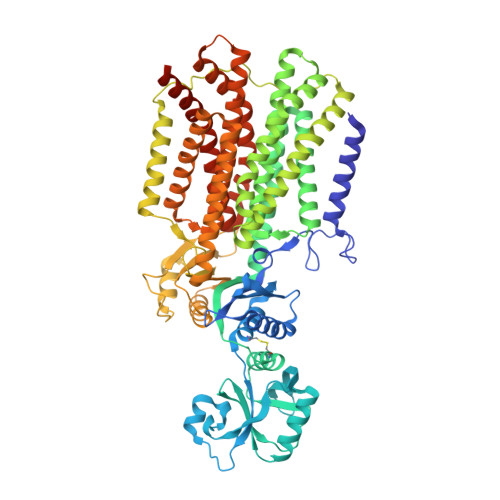Tunnel Formation Inferred from the I-Form Structures of the Proton-Driven Protein Secretion Motor SecDF
Furukawa, A., Yoshikaie, K., Mori, T., Mori, H., Morimoto, Y.V., Sugano, Y., Iwaki, S., Minamino, T., Sugita, Y., Tanaka, Y., Tsukazaki, T.(2017) Cell Rep 19: 895-901
- PubMed: 28467902
- DOI: https://doi.org/10.1016/j.celrep.2017.04.030
- Primary Citation of Related Structures:
5XAM, 5XAN, 5XAP - PubMed Abstract:
Protein secretion mediated by SecYEG translocon and SecA ATPase is enhanced by membrane-embedded SecDF by using proton motive force. A previous structural study of SecDF indicated that it comprises 12 transmembrane helices that can conduct protons and three periplasmic domains, which form at least two characterized transition states, termed the F and I forms. We report the structures of full-length SecDF in I form at 2.6- to 2.8-Å resolution. The structures revealed that SecDF in I form can generate a tunnel that penetrates the transmembrane region and functions as a proton pathway regulated by a conserved Asp residue of the transmembrane region. In one crystal structure, periplasmic cavity interacts with a molecule, potentially polyethylene glycol, which may mimic a substrate peptide. This study provides structural insights into the Sec protein translocation that allows future analyses to develop a more detailed working model for SecDF.
Organizational Affiliation:
Graduate School of Biological Sciences, Nara Institute of Science and Technology, 8916-5 Takayama-cho, Ikoma, Nara 630-0192, Japan.
















